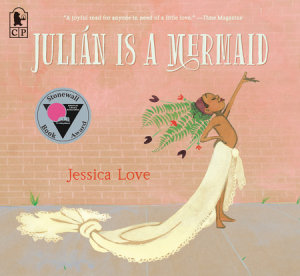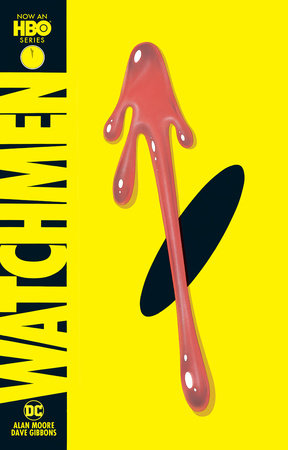Ona Louise (she/her), drag performer and Executive Director of Drag Story Hour (DSH), closes the book she’s reading — No One Owns the Colors by Gianna Davy and illustrated by Brenda Rodriguez — and reminds the kids in her audience to “remember that colors are for everyone, and we live in a bright, colorful world and you should show your true colors no matter what.”
It’s the perfect ending for the video she filmed for GLAAD’s celebration of Read Across America Day in early March 2023 and encapsulates Drag Story Hour’s mission, which is to give kids “glamorous, positive, and unabashedly queer role models… who defy gender restrictions and promote a world where everyone can be their authentic selves.” Done through — as the name suggests — storytellers using the art of drag to read books in libraries, schools, and bookstores.
While Ona Louise is giving 1960s Palm Springs housewife in her Pucci-esque patterned dress, white hoops, and long red wig for GLAAD’s video, I spoke with her mustachioed and tee-shirt-clad alter ego, Jonathan Hamilt, at his home in New York City via Zoom.
Jonathan Hamilt (he/him) joined Drag Story Hour as the organization’s first Executive Director in February 2020. Since then, he’s given the group a makeover, taking it from a loose collection of chapters across a few states to a national 501(c)(3) non-profit with a global network of local organizations, each of which is independently managed and funded. Drag Story Hour was created in San Francisco in 2015 by author Michelle Tea, who was frustrated at the heteronormativity of the events for kids at her local library. Tea, along with queer Colombian writer and performer Julián Delgado Lopera and author and weight-based discrimination expert Virgie Tovar organized the first event, which was held at the Eureka Valley/Harvey Milk Memorial Branch Library in the Castro neighborhood of San Francisco – an area synonymous with queer culture and history.
“Our first drag storytellers were trans women of color who were already doing drag in the Bay Area,” says Hamilt. “We certainly don’t own the intellectual property to read in costume to kids,” he jokes. “When we began, there was an Indigenous Two-Spirit Storytime happening in Canada and we recently found out The Sisters of Perpetual Indulgence, a non-profit drag troupe dressed as nuns, had been reading to kids in libraries beginning in 2006. As we learn more about other groups who have also been doing this, I try to weave them into our origin story – drag artists have been doing this for years! But we’re the ones who have really taken this idea and made it a movement.”
And a movement it has become: Hamilt, who co-founded the New York City chapter in 2016, reports that DSH has now mushroomed to 50 chapters in 45 states in the United States and over a dozen international chapters. “The majority of our chapters are volunteer-based,” he says. “All of our queer artists get paid for their time and artistry when doing story hour, but a lot of our performers are educators, or social workers, or parents or teachers — people who are doing this in addition to whatever other day job they have. It’s really a labor of love and activism.” Chapters can range from the small, “one or two drag artists, organizing events when they can,” to the massive, like New York City’s, which hosted 67 in-person programs and 141 virtual programs in 2021, serving 863 children in person and thousands more virtually. The program also works with middle and high schools, visiting drama clubs and Gay-Straight Alliance Clubs, and performs for adults, from university students to employees at corporate Diversity Equity and Inclusion events. “We also work with senior citizens and do sing-alongs, Bingo, and makeup tutorials with them,” Hamilt says, smiling. “New York City also offers a neurodiverse story hour specifically designed for kids on the autism spectrum.”
Hamilt walks me through a typical Drag Story Hour: “Our signature programming is in public libraries for kids three to eight. We read about four children’s books with songs or movement breaks in between, then we’ll end with arts and crafts and a closing song. It’s just like any other library story hour, except the reader is a little more fabulous and probably has bigger hair.”
We really want our audiences to see themselves and see their communities in the books we read.
Jonathan Hamilt
The books the performers read often touch on themes of diversity and difference, though sometimes drag performers reach for the classics, “because it’s really about the queer representation of who is reading the book that is delivering the message of celebrating difference in themselves and others,” Hamilt says. But not every book is great for story time, especially when you’re trying to capture the attention of dozens of squirming children. “Kids love making animal sounds and doing motions, so any book that can implement extra audience participation is a good one,” he says. “With drag, you know, the more characters and voices and acting you can do is really just the cherry on top of the wig!”
But Jonathan Hamilt’s work with Drag Story Hour isn’t all wigs and glitter: recently, the events have attracted the ire of right-wing conservatives — both parents and politicians — who claim the story hours aren’t safe for children. GLAAD reports that there were 141 incidents of anti-LGBTQ+ protests and threats targeting specific drag events in 2022, several of which involved violence or weapons and included white supremacist extremist groups like the Proud Boys, and Patriot Front. At the time of this writing, 14 states, including Arizona, North Carolina, Texas, and Kentucky, have proposed anti-drag legislation, and Tennessee became the first state to explicitly ban drag shows in public spaces, though a federal judge has temporarily blocked the law from going into effect, claiming the statute violates the First Amendment.
“This is nothing new. This is just the 2023 version of what’s been going on for 50 years,” Hamilt says, unruffled, even though he’s just told me he gets daily death threats and hate mail. “Remember Anita Bryant’s 1977 anti-LGBTQ+ campaign ‘Save Our Children?’ Sounds kind of familiar, doesn’t it? Using children as a scapegoat is a smoke-and-mirrors way to chip away at gay rights and mask the real issues at hand, which are transphobia, trans misogyny, and homophobia. It’s not about drag, it’s not about children, it’s about controlling people.”
Despite the protests of Drag Story Hour, Hamilt also points to a growing mainstream audience for drag culture, perhaps ignited by recent stories in the media that bring drag into the national conversation. “We’ve been doing this work for seven years, but in the last year or so, people are acting like drag is new or trans people are new. It’s like ‘Hate to tell ya, honey, but we’ve been here since the dawn of time!’”
But while some adults are just catching on to Drag Story Hour, kids have always known it was special. “Reading to kids, promoting literacy and books is so important,” Hamilt says. “And in this age of screen time, I don’t think kids experience enough live performance and theater. Drag is very theatrical, very over the top, very outlandish, colorful, and fun. And there’s lots of energy behind it. I think that’s why kids like it so much because it’s like having a Disney character, up close and personal. And then when we use that art of drag to read books, it’s magical, because books are mirrors and windows to different worlds and different places. We really want our audiences to see themselves and see their communities in the books we read,” Hamilt says, his passion for his work evident in his excited monologue.
“When I was growing up, books looked different but now there’s so much amazing children’s literature out there. When we read to kids, we choose books that teach about diversity, inclusion, and equity and that show an array of characters who stand up for their communities and become bright lights of change for the future. I think the sooner kids experience difference, they’re going grow up to be more well-adjusted, and have more compassion over comprehension. You don’t have to comprehend everything about somebody to have compassion for them. Drag Story Hour — both the books we read and the performers reading them — helps teach kids that as they grow up and navigate the diversity in the world, they can be at peace with themselves and know that it’s okay to be different. And it’s not a threat to you if someone looks and acts and believes different things than you do.”
Reflecting on Drag Story Hour’s impact thus far, Hamilt says, “The first kids that we started reading to at five are 13 now, and they’re totally unbothered by drag queens and kings. It’s a part of their childhood that’s almost rote and boring to them now. I think it will lead to a culture shift as they grow older of drag being totally normalized. They’ll know that drag is an important, integral part of the queer community and the trans community. They’ll know without the trans community, there would be no drag. They’ll know the importance of lifting and centering queer voices. They’ll go to a drag show as an adult and tip well!” he says with a laugh.
Drag Story Hour is helping to shape generations of well-adjusted kids, who will grow into well-adjusted adults, but what can allies do to stand up for the queer community today? “Get involved in your community. Get into local politics, join the school board or PTA, and make your voice known about what you think is acceptable in your community when it comes to homophobia, transphobia, and racism,” Hamilt says. “I think the average heterosexual should know that when you uplift and include the most marginalized voices — trans voices, BIPOC voices, queer voices — it means we all get a seat at the table, and we all feel equity in our community. That will lead to a future where there are safe spaces for anybody that doesn’t feel safe in the general public. And if the drag queen has to lead that safe space, then we’re going to do it.”
Book Recommendations From Drag Performers



“I love to read this one at Drag Story Hour because you can get so silly with it and kids of all ages just love it! And Grover is the main character — he’s my fave. My mom read it to me as a child and I can’t think of a better way to fight monsters!” —Veronika Electronika, Nashville, TN



“One of my favorite books to read is Julián Is a Mermaid. Author and activist Jessica Love, who serves on the Drag Story Hour Board of Directors, really captures the imagination, and play of dress-up and the book acts as a window and door for the audience to experience creativity as a joyous exploration.” —Ona Louise, New York, NY






“The book that has really shaped me is Watchmen by Alan Moore. It’s about the power of dressing up and why people dress up. Nobody knows more about that than a drag queen. It’s also a teardown, or deconstruction, of America’s relationship to fame, violence, and power. Ultimately, the differences in perceiving reality.” —Trixie Mattel, Los Angeles, CA
Organizations to Support:
This story originally appeared in Penguin Random House’s 2023 ‘Pride in Your Words’ zine.











